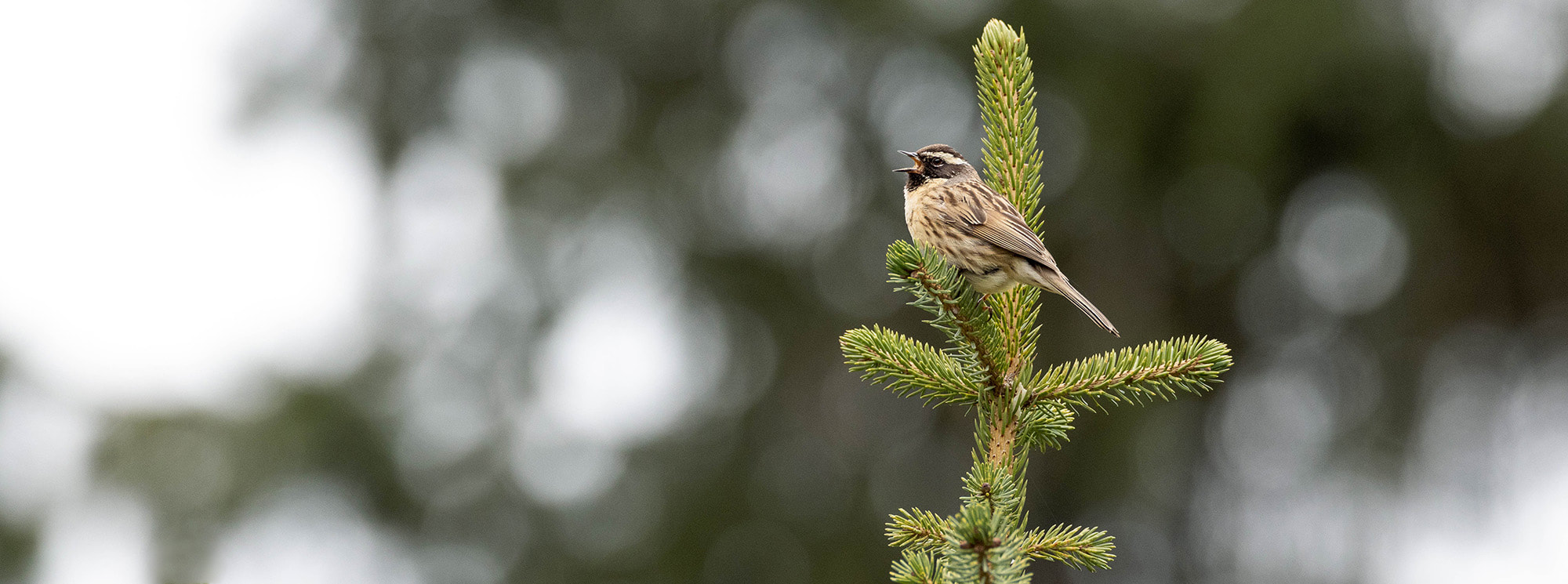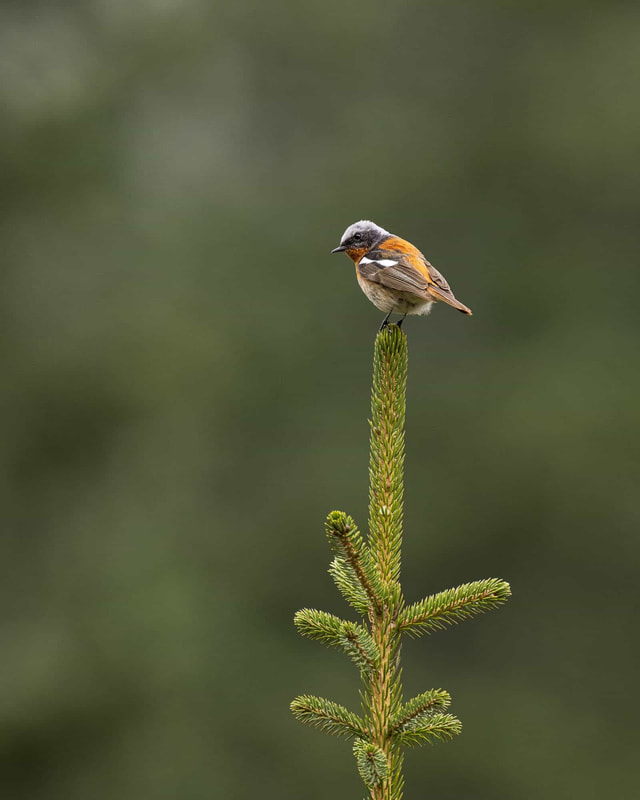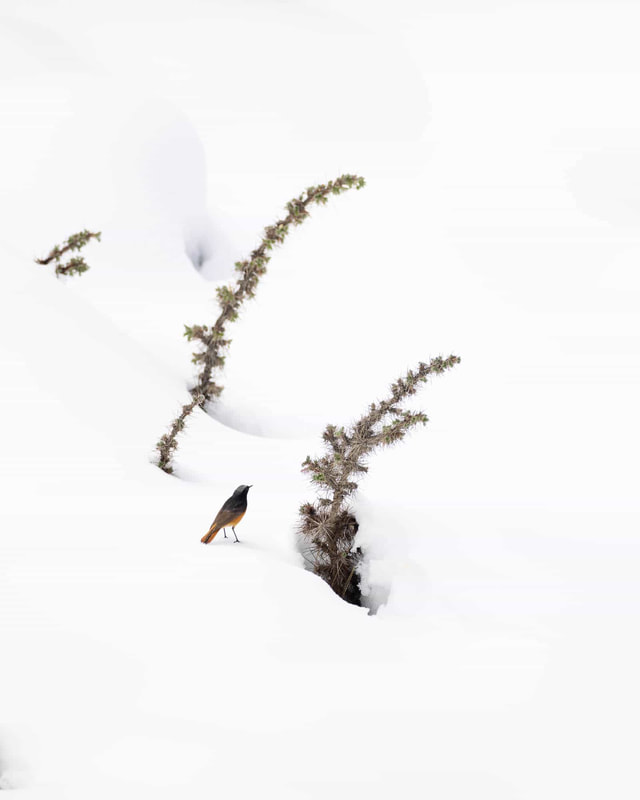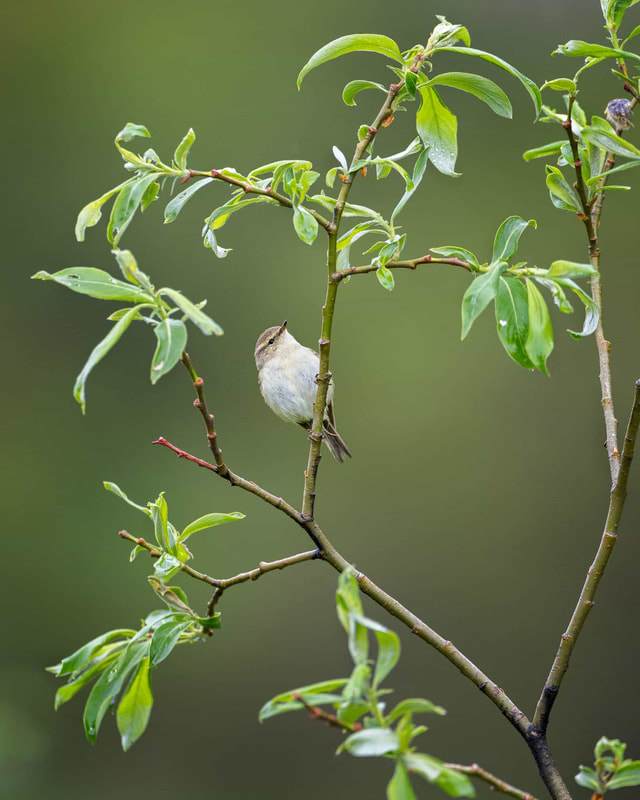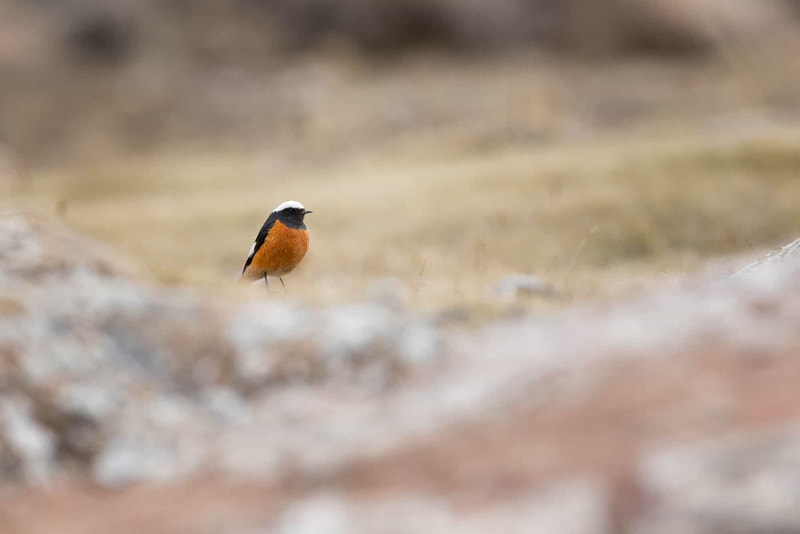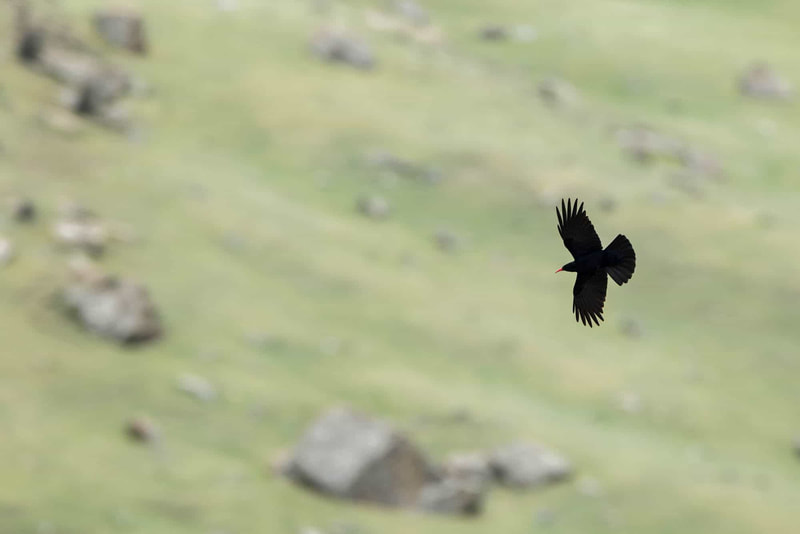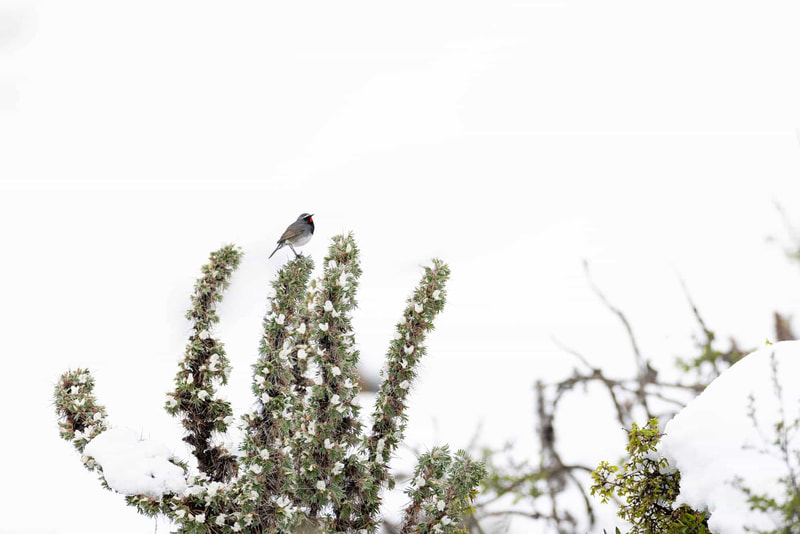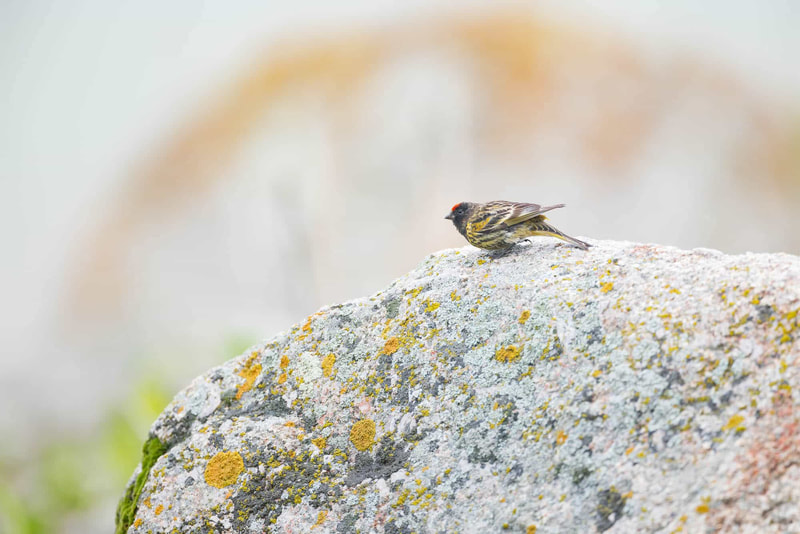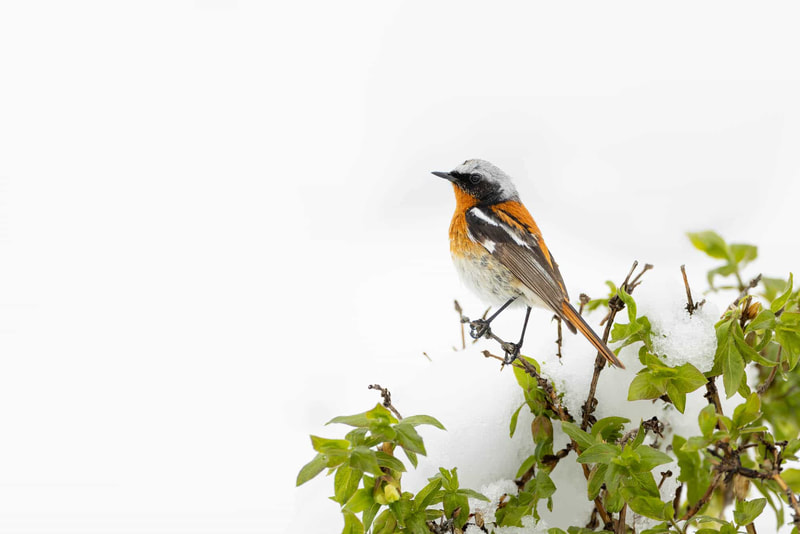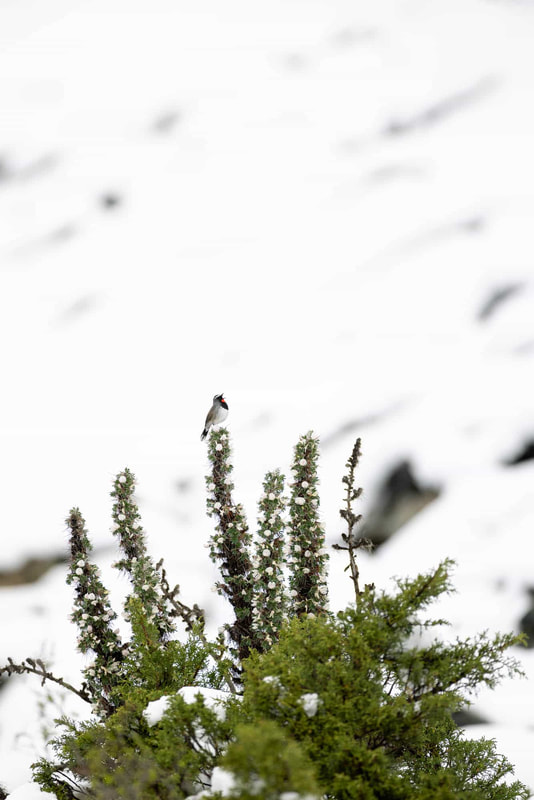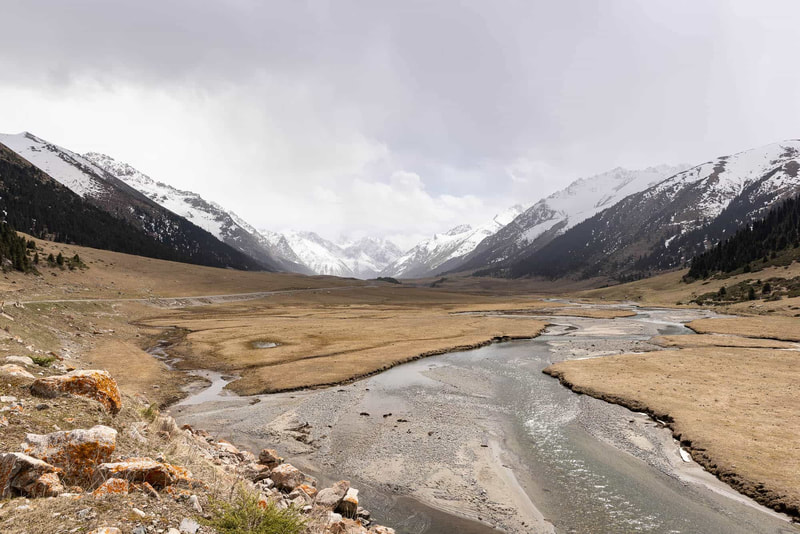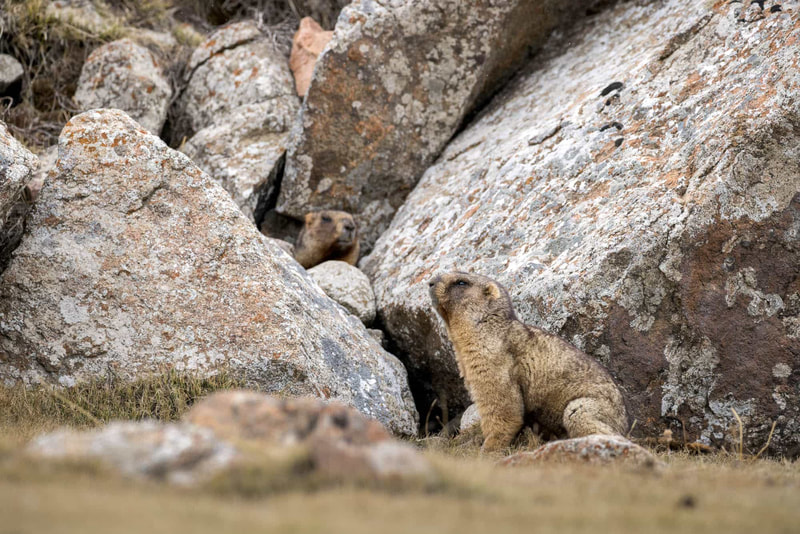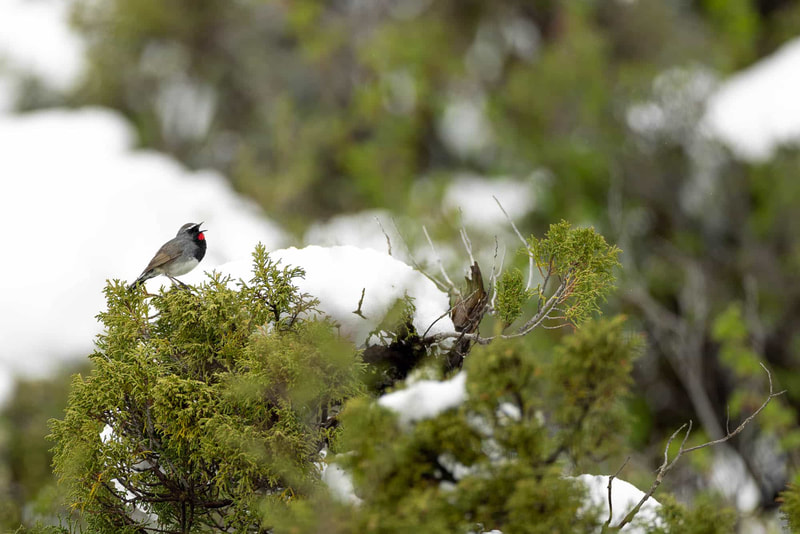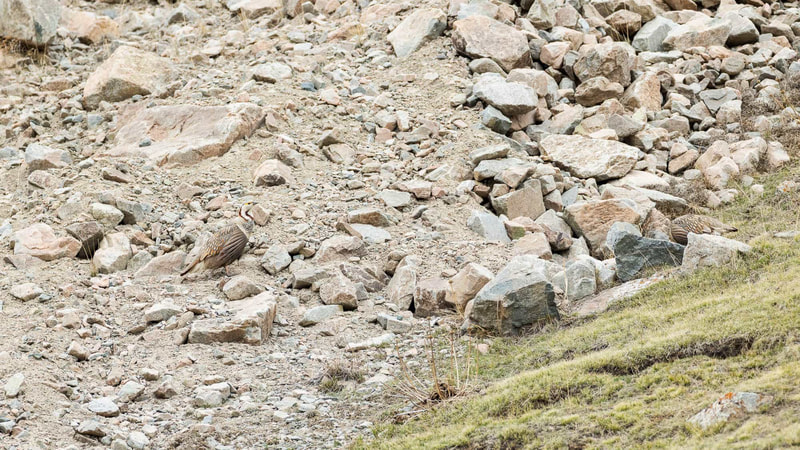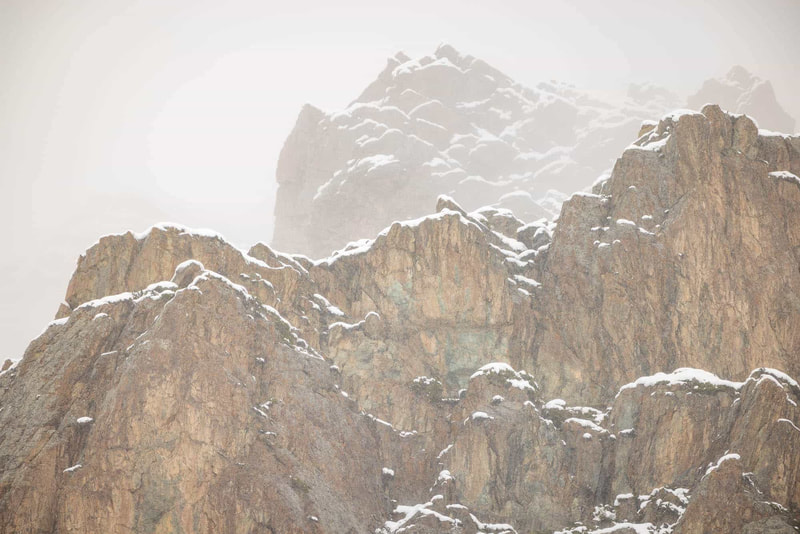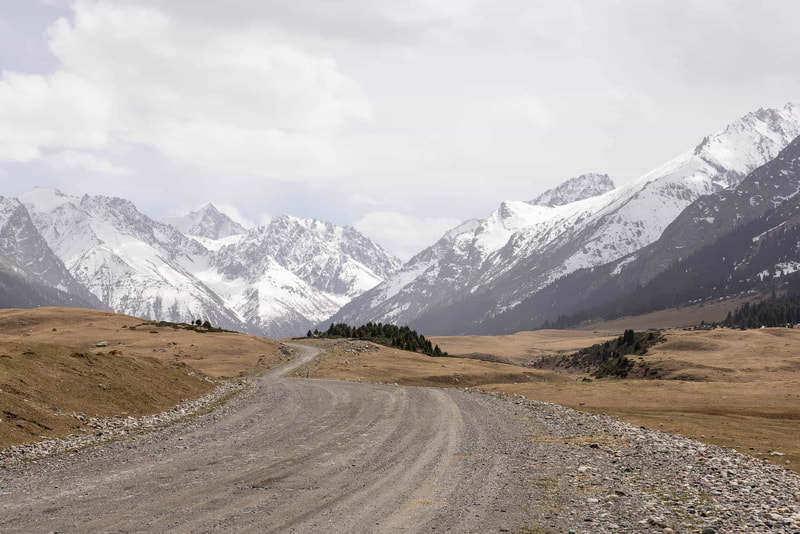BIRD PHOTOGRAPHY IN THE KYRGYZ MOUNTAINS
Central & Eastern Kyrgyzstan
In the remote Tian-Shan mountains, in Kyrgyzstan, lies a little-explored paradise for bird lovers. There, in rugged valleys, from 1500m to almost 4000m above sea level, highly specialized species breed. Among them, true icons such as the Brown Dipper, the Himalayan Snowcock or the Ibisbill.
Conditions can be rough in the mountains, but as we climb, we’ll pass through a variety of habitats that each host different birds. We’ll explore spruce forest, follow gushing torrents, scour juniper scrub and scrutinize rocky slopes to locate our target species, and they are many! Some are small and restless, like the Sulphur-bellied Warbler. Others are colourful and sometimes tame, like Eversmann’s Redstart. Most require hard work to photograph well, but thanks to our knowledge of the region and the expertise of photographic guide Samuel Bloch, we expect to go home with wonderful shots on everyone’s memory cards.
Conditions can be rough in the mountains, but as we climb, we’ll pass through a variety of habitats that each host different birds. We’ll explore spruce forest, follow gushing torrents, scour juniper scrub and scrutinize rocky slopes to locate our target species, and they are many! Some are small and restless, like the Sulphur-bellied Warbler. Others are colourful and sometimes tame, like Eversmann’s Redstart. Most require hard work to photograph well, but thanks to our knowledge of the region and the expertise of photographic guide Samuel Bloch, we expect to go home with wonderful shots on everyone’s memory cards.
|
Targets The valley floor Common Wood Pigeon (ssp casiotis) Pallas’s Grasshopper Warbler Common Rosefinch Pine Bunting Azure Tit The montane forest Brown Dipper White-throated Dipper (ssp leucogaster, “White-bellied”) Blue Whistling Thrush Hume’s Leaf Warbler Greenish Warbler Eversmann’s Redstart Blue-capped Redstart Black-throated Accentor Water Pipit Red-fronted Serin Rufous-naped Tit The juniper scrubs White-browed Tit-warbler Himalayan Rubythroat Red-mantled Rosefinch White-winged Grosbeak Sulphur-bellied Warbler The alpine meadows Ibisbill Ruddy Shelduck Alpine Chough Red-billed Chough Demoiselle Crane Citrine Wagtail The lakes Garganey Horned Grebe Lesser Sand Plover Spotted Redshank Terek Sandpiper The rocky outcrops Grey Marmot Black Redstart (ssp phoenicuroides) Plain Mountain Finch Brandt’s Mountain Finch Güldenstädt’s Redstart Himalayan Snowcock Brown Accentor Altai Accentor Hill Pigeon |
Next departure(s)
Early June, please enquire! |
Highlights
- wander between and forest and torrent to look for redstarts and dippers
- explore juniper shrubs and photograph rosefinches and rubythroats
- experience the change of habitats as we ascend towards 4000m asl
- seek the well-camouflaged Himalayan Snowcock in its rocky biotope
- document some of the finest mountain environments
Itinerary
Day 1: early arrival in Bishkek, transfer to Ala-Archa National Park. Morning photo session, then rest. The end of the day is devoted to an introduction to the region and a photo session in the lowlands.
Day 2: full day of photography in Ala-Archa National Park, with a focus on forest and river birds. We typically start early and may shoot until late afternoon, according to conditions.
Day 3: morning photography session then transfer to Karakol. Rest. Evening photo session in the lowlands.
Day 4-8: full days of photography in the valleys around Karakol, with a focus on mountain birds.
Day 9: transfer to Song-Kul. Evening photography session by the lake.
Day 10-11: full days of photography around Song-Kul, with a focus on grassland and wetland birds.
Day 12: morning photography session then transfer back to Bishkek. Departure from Kyrgysztan during the night.
Highlights
- wander between and forest and torrent to look for redstarts and dippers
- explore juniper shrubs and photograph rosefinches and rubythroats
- experience the change of habitats as we ascend towards 4000m asl
- seek the well-camouflaged Himalayan Snowcock in its rocky biotope
- document some of the finest mountain environments
Itinerary
Day 1: early arrival in Bishkek, transfer to Ala-Archa National Park. Morning photo session, then rest. The end of the day is devoted to an introduction to the region and a photo session in the lowlands.
Day 2: full day of photography in Ala-Archa National Park, with a focus on forest and river birds. We typically start early and may shoot until late afternoon, according to conditions.
Day 3: morning photography session then transfer to Karakol. Rest. Evening photo session in the lowlands.
Day 4-8: full days of photography in the valleys around Karakol, with a focus on mountain birds.
Day 9: transfer to Song-Kul. Evening photography session by the lake.
Day 10-11: full days of photography around Song-Kul, with a focus on grassland and wetland birds.
Day 12: morning photography session then transfer back to Bishkek. Departure from Kyrgysztan during the night.
Recommended equipment
One or more camera bodies
Telephoto lens, minimum 400mm
Wide-angle lens (optional)
Teleconverters (optional)
Tripod or monopod, according to taste, and head
For low-angle situations we recommend a tripod that can spread flat, a ground pod or a bean bag
Thermal underwear
Beanie-gloves-scarf, sunblock, sunglasses
Situations
As we cover a wide range of altitudes, we encounter a variety of different habitats, each hosting its own suite of species.
The valley floor, near Bishkek and Karakol, is mostly agricultural land. There are a few species of interest there, such as the skulking Pallas’s Grasshopper Warbler, on the western edge of its distribution, or the striking Pine Bunting. This is not the habitat we’ll spend the most time in, but it has its charms.
Going up, we’ll encounter gorgeous spruce forest, keeping an eye on old treetops for singing Blue Whistling Thrush or Blue-capped Redstart. This is the realm of the inobstrusive Hume’s Leaf Warbler, but also the Black-throated Accentor. The fast-flowing river holds both Brown Dipper and White-throated Dipper of subspecies “leucogaster”. Clearings should give us the opportunity to photograph Red-fronted Serins and Water Pipits.
When the forest opens, we’ll reach the altitude meadows where Red-billed Choughs and Ruddy Shelducks like to forage. One of the most sought-after birds in the region, the Ibisbill, feeds on the shingle-bed rivers. Scattered in the meadows are clumps of juniper scrubs, a singular feature of the landscape that many birds appreciate. Our main targets there include stunning species such as the Himalayan Rubythroat, the White-winged Grosbeak, the Red-mantled Rosefinch and the elusive White-browed Tit-warbler.
As we continue up, vegetation becomes rarer and rock starts to dominate the scenery. We enter the realm of the high-altitude species, including the Himalayan Snowcock, the Güldenstadt’s Redstart and the Brown Accentor. At any time, there might be a Himalayan Vulture or a Bearded Vulture flying above us.
Wetlands, near Karakol or at Song-Kul, will offer quite a different experience, for instead of being confined between high peaks, we will enjoy a more open scenery. Naturally, the species suite will be different too, from Garganey and Lesser Sand Plover to Citrine Wagtail and Azure Tit.
In those Kyrgyz valleys, making photographs of wildlife involves a few different situations. To guarantee a true natural experience with limited disturbance, we do not use playback or feeding. Instead, we rely on patience and observation, and understand that wildlife photography demands commitment.
In the valley, in the forest and among the juniper, we mostly scatter and walk slowly, ready to point our camera at any bird willing to pose for us. If we notice a singing perch, we may set up a temporary tent or hide under camouflage to wait for the bird to come back and photograph it without being seen.
To photograph waterfowl, waders, the dippers and the Ibisbill, we may use hides as well. To obtain the best results, it is recommended to lie down on pebbles, rock or grass, but it is not compulsory.
For the birds of rocky outcrops, we mostly walk along the road, or try to hide between boulders.
One or more camera bodies
Telephoto lens, minimum 400mm
Wide-angle lens (optional)
Teleconverters (optional)
Tripod or monopod, according to taste, and head
For low-angle situations we recommend a tripod that can spread flat, a ground pod or a bean bag
Thermal underwear
Beanie-gloves-scarf, sunblock, sunglasses
Situations
As we cover a wide range of altitudes, we encounter a variety of different habitats, each hosting its own suite of species.
The valley floor, near Bishkek and Karakol, is mostly agricultural land. There are a few species of interest there, such as the skulking Pallas’s Grasshopper Warbler, on the western edge of its distribution, or the striking Pine Bunting. This is not the habitat we’ll spend the most time in, but it has its charms.
Going up, we’ll encounter gorgeous spruce forest, keeping an eye on old treetops for singing Blue Whistling Thrush or Blue-capped Redstart. This is the realm of the inobstrusive Hume’s Leaf Warbler, but also the Black-throated Accentor. The fast-flowing river holds both Brown Dipper and White-throated Dipper of subspecies “leucogaster”. Clearings should give us the opportunity to photograph Red-fronted Serins and Water Pipits.
When the forest opens, we’ll reach the altitude meadows where Red-billed Choughs and Ruddy Shelducks like to forage. One of the most sought-after birds in the region, the Ibisbill, feeds on the shingle-bed rivers. Scattered in the meadows are clumps of juniper scrubs, a singular feature of the landscape that many birds appreciate. Our main targets there include stunning species such as the Himalayan Rubythroat, the White-winged Grosbeak, the Red-mantled Rosefinch and the elusive White-browed Tit-warbler.
As we continue up, vegetation becomes rarer and rock starts to dominate the scenery. We enter the realm of the high-altitude species, including the Himalayan Snowcock, the Güldenstadt’s Redstart and the Brown Accentor. At any time, there might be a Himalayan Vulture or a Bearded Vulture flying above us.
Wetlands, near Karakol or at Song-Kul, will offer quite a different experience, for instead of being confined between high peaks, we will enjoy a more open scenery. Naturally, the species suite will be different too, from Garganey and Lesser Sand Plover to Citrine Wagtail and Azure Tit.
In those Kyrgyz valleys, making photographs of wildlife involves a few different situations. To guarantee a true natural experience with limited disturbance, we do not use playback or feeding. Instead, we rely on patience and observation, and understand that wildlife photography demands commitment.
In the valley, in the forest and among the juniper, we mostly scatter and walk slowly, ready to point our camera at any bird willing to pose for us. If we notice a singing perch, we may set up a temporary tent or hide under camouflage to wait for the bird to come back and photograph it without being seen.
To photograph waterfowl, waders, the dippers and the Ibisbill, we may use hides as well. To obtain the best results, it is recommended to lie down on pebbles, rock or grass, but it is not compulsory.
For the birds of rocky outcrops, we mostly walk along the road, or try to hide between boulders.
Conditions
In the mountains, and particularly at such altitudes, conditions are unpredictable and can change quickly. When we set off in the morning, we never know what our day will be like.
Snow is a common occurrence, and can be a hindrance as well as an ally. A hindrance, because it can prevent us from going high up, and from venturing away from the road. An ally, because snowstorms force high-altitude birds down, for instance Plain or Brandt’s Mountain Finches. Shooting birds on snow is a totally different experience, and the pictures we make on such occurrences tend to stand out from the rest.
Fog is generally an unpleasant surprise, as it significantly degrades image quality. To beat it, we can either decide to go up the mountain and try to rise above it, or go down to stay under it.
At other times, it can be sunny and warm. Therefore, it’s important to dress in layers, and to plan for temperatures between -5ºC and 15ºC, with wind sometimes. A hat and sunblock are also primordial.
From our cosy lodgings, we travel by bus to reach our shooting locations. Nevertheless, we always have to walk a little, sometimes on rocky, unstable ground. It is important to have sturdy shoes, to go slowly and to look at where you step. At the higher altitudes, even a little exercise feels tiring, and you’ll notice that you’re out of breath very quickly. Once again, go slowly and stick to what you are comfortable with. The mountain is big, so we have a lot of space to work with. If you feel like it, you can range further from the bus, but you can also remain close. Thus, photography remains fun and adapted to everyone’s fitness level. It’s totally OK to take it easy sometimes, to come back early to the bus to rest and have a snack.
Because tmany of the valleys where we work are oriented to the north, we cannot take advantage of sunrise and sunset lights. We generally have breakfast at our guesthouse, leave at 5.30, have a packed lunch in the field and come back to Karakol in the afternoon, where we have dinner at a restaurant. If the weather plays nicely, we can hope to shoot grassland and wetland species at golden hour.
Conditions
In the mountains, and particularly at such altitudes, conditions are unpredictable and can change quickly. When we set off in the morning, we never know what our day will be like.
Snow is a common occurrence, and can be a hindrance as well as an ally. A hindrance, because it can prevent us from going high up, and from venturing away from the road. An ally, because snowstorms force high-altitude birds down, for instance Plain or Brandt’s Mountain Finches. Shooting birds on snow is a totally different experience, and the pictures we make on such occurrences tend to stand out from the rest.
Fog is generally an unpleasant surprise, as it significantly degrades image quality. To beat it, we can either decide to go up the mountain and try to rise above it, or go down to stay under it.
At other times, it can be sunny and warm. Therefore, it’s important to dress in layers, and to plan for temperatures between -5ºC and 15ºC, with wind sometimes. A hat and sunblock are also primordial.
From our cosy lodgings, we travel by bus to reach our shooting locations. Nevertheless, we always have to walk a little, sometimes on rocky, unstable ground. It is important to have sturdy shoes, to go slowly and to look at where you step. At the higher altitudes, even a little exercise feels tiring, and you’ll notice that you’re out of breath very quickly. Once again, go slowly and stick to what you are comfortable with. The mountain is big, so we have a lot of space to work with. If you feel like it, you can range further from the bus, but you can also remain close. Thus, photography remains fun and adapted to everyone’s fitness level. It’s totally OK to take it easy sometimes, to come back early to the bus to rest and have a snack.
Because tmany of the valleys where we work are oriented to the north, we cannot take advantage of sunrise and sunset lights. We generally have breakfast at our guesthouse, leave at 5.30, have a packed lunch in the field and come back to Karakol in the afternoon, where we have dinner at a restaurant. If the weather plays nicely, we can hope to shoot grassland and wetland species at golden hour.
Day to day (hypothetical)
Day 1: even though we meet very early at the airport, everyone is very happy and energetic, because it’s the beginning of a special adventure. After having a coffee and changing or withdrawing some money, we board our bus and start the short drive to Ala-Archa, south of Bishkek. Once there, we enjoy a delicious breakfast and embrace the first of many stunning mountain views in Kyrgyzstan! Then we immediately start to look for birds while the trails are empty of people. We won’t have far to walk before finding our main target, the lovely Rufous-naped Tit. Photographing it is a different story, but we take our time, waiting for it to jump on the right branch and look in our direction for a second! Later, we will head to our guesthouse for a good rest. There will be time for an introduction to the region, and maybe an evening photo session in the lowlands with Long-legged Buzzard, Rosy Starling and Eastern Goldfinch as our main targets.
Day 2: to beat the crowds, we leave our accommodation at 5 in the morning. In the forest, Eversmann’s Redstarts should be putting up a show for us, unless it’s the massive and deeply-coloured Blue Whistling Thrush that captures our attention. Male birds will be singing, but if we manage to find a nest, we can set up hiding stations to create special images without disturbing the birds. After a field lunch, we push on up the valley, looking for attractive species such as Alpine Chough, Sulphur-bellied Warbler or the phenomenal Wallcreeper. We also keep an eye out for any soaring raptor such as honey buzzards or Himalayan Vulture. Back near our guesthouse, we explore the agriculture landscape in search of Turkestan Shrikes and Azure Tits.
Day 3: an early start sees us roaming through juniper bushes for specialist species like Himalayan Rubythroat or White-winged Grosbeak, colourful jewels that will no doubt bring a sparkle to our eyes. Then, we start the drive towards Karakol. On the way, we will have a pleasant lunch and a few other stops to stretch our legs, enjoy the rugged scenery and spot a few birds. After 5-6 hours of driving, we reach Karakol for check-in at our superb guesthouse accommodation. There will be time for rest, and we may visit a low-altitude area for our first photography session in the area. Dinner will be at our usual restaurant (it’s delicious!), and we’ll be in bed early, excited about the next day, in the mountains.
Day 4: a tasty and hearty breakfast is served in our guesthouse at 5 in the morning, as we aim to leave at 5.30. As we drive along Issyk-Kul, the “warm lake”, at 1500 meters above sea level, we enjoy beautiful scenery, with the first rays of sun hitting the snowy peaks of the Tian Shan. In Barskoon, we turn left and start our drive up the valley, along a well-formed road leading to a mine. With great weather, we aim to reach high altitude to find local specialties. The stunning Güldenstadt’s Redstart is the star of the show, and we expect to find a few pairs defending their territory. We will hear Himalayan Snowcocks, though actually seeing them will most likely be a challenge. They are difficult to photograph, but we are in one of the best places to do that. We’re also in a prime spot to look for Altai and Brown Accentors. In the air, Common Ravens and Golden Eagles fly by. In addition to the bird life, the scenery will keep us awe-struck all day long! Spending time at high altitude is tiring, so we’ll head down to the lower slopes after a few hours. We’ll look for the amazing White-browed Tit-warbler among juniper brushes, along with Sulphur-bellied Warbler and the chubby Grey Marmot.
Day 5: departure time is the same every day, but today we are going east, into Chon Ashuu Valley. Once again, we aim for high altitude habitat, weather permitting. The road is bumpier than in Barskoon Valley, but we take our time, and we are not troubled by any traffic. The hardy vegetation is home to Himalayan Rubythroats that like to sing from the tallest branches. They are the Nightingale of the Himalayas, and our main target in the area. What a superb little bird, with that bright red throat contrasting with the otherwise black and white plumage! We slowly spread among the bushes and enjoy a soothing moment in nature, photographing one of its many wonders. If there is snow on the ground, we stay on the road, but the white carpet brings so many creative possibilities that it easily alleviates our lack of mobility. Further, we may encounter small groups of Red-mantled Rosefinches, while Alpine Choughs fly high above in large and noisy flocks. We descend a little for a refreshing lunch, then switch our focus on river birds, and particularly the iconic Ibisbill, a wader that looks like a small ibis and calls those mountains home. It is shy, so we lie down under camouflage in a favourable spot by the stream and wait for it to come to us. In the process, the common but attractive Ruddy Shelduck might pose for us.
Day 6: heading back into Chon Ashuu Valley, we focus on the lower reaches. There, in the alpine forest, we track Eversmann’s, Blue-capped and Black (phoenicuroides) Redstarts, all beautiful birds that sometimes pose very nicely. We use the slope of this narrow valley to our advantage, to be at eye-level with the birds that perch on top of the spruces. More discreet, the Black-throated Accentor reveals itself when singing, while Hume’s Leaf-warblers and Greenish Warblers restlessly forage in the foliage. In the meadows, Red-fronted Serins and Water Pipits are our main targets. If the weather is stormy, we can even expect to find Plain and Brandt’s Mountain-finches as they flee snow at higher elevation. The gushing torrent is the perfect place to photograph Brown and White-throated (leucogaster “White-bellied”) Dippers. Careful scouting will have revealed their favourite rocks, so we can sit down and wait for the birds to come. We might even come upon baby dippers: seeing the parents feed them in such a gorgeous environment is truly a gift!
Day 7: on a sunny morning, we spend a few hours at the start of Chon Ashuu Valley to photograph the spectacular Pine Bunting. They are present in good numbers, but like a bit too much to perch on wires. With perseverance, we hope to also find them on bushes in golden light, to create very special images. A bit further, we look for Rock Buntings and Azure Tits in shrubs. The biggest prize would be an Upland Buzzard surveying its farmland territory. Going up the valley once more, we focus on juniper growth. White-browed Tit-warbler is always difficult, as it likes to skulk without a sound, but by spending time in the right habitat, we put all chances on our side. White-winged Grosbeak, a large yellow, black and white songbird, is another bird we look for, along with the rubythroat and the Red-mantled Rosefinch. In the afternoon, we travel to Jeti Oguz, a historically-significant site that also has birds. Common Rosefinches abound, and Blue-capped Redstarts are not uncommon either, though the latter require patience.
Day 8: after an early departure, we visit Barskoon Valley again, where we look for high-altitude birds. With fresh snow, the mountains look very different, and our experience up there is sure to be exciting. A Ruddy Shelduck might make an appearance, a true jewel that one wouldn’t necessarily expect so high. Güldenstadt’s Redstarts will still be there, looking for food on the few exposed rocks, while Bearded Vultures fly high in the sky. The contrasted Hill Pigeon is a quiet but stunning beauty of those valleys, so we’re always happy to see one. When the fog appears, we drive lower, looking for Blue Whistling Thrush along the river. On the shores of Lake Issyk Kul, we explore a few areas for waterfowls and waders, and look for Common Wood Pigeons of subspecies casiotis, with the buff spot on the side of the neck.
Day 9: today, we say goodbye to our wonderful hosts in Karakol and depart for the high altitude sceneries of Lake Song-Kul. On the way, we have a few breaks to stretch our legs and admire the views, and we arrive for lunch. Our yurt accommodation, near the lake shore, is wonderfully picturesque! In the afternoon, we scout the surrounding area to find the most promising locations, before an evening photo session dedicated to Lesser Sand Plovers and other waders that nest there. Song-Kul is a remarkable location to work on environmental portraits, so we’ll strive to include the fantastic landscape in our compositions.
Day 10: with an early departure again, we take advantage of the sunrise light to photograph waterfowls. Very common are the Garganeys, but they are also skittish, so we use camouflage and wait for them to become more confident. Other fantastic targets include the colourful Ruddy Shelduck, Red-crested Pochard and Horned Grebe. Some waders may pay us a visit too, such as Common and Spotted Redshank but also the unique Terek Sandpiper. If it’s a sunny day, we use the middle of the day to rest, before shooting again in the evening light. Citrine wagtails are another common denizen of the plateau, so we make it our main target. They are of subspecies calcarata, so the brilliant yellow head and belly strongly contrast with their pitch-black back. Spectacular!
Day 11: this last full day of photography is a bit of a wild card, and our program will depend on what targets we’re still missing, and on the weather we have and have had. We may keep shooting around the lake, possibly looking for the elegant Demoiselle Cranes to grace our environmental images. We may also look for the cute White-winged Snowfinch on the eastern side of the lake, for an extra taste of mountain birds. In such a landscape, we also look for more discreet species such as Brown Accentor and Plain Mountain Finch. Common Rock Thrush is another attractive bird well worth looking for, and so is the Horned Lark, a common but exciting bird of the highlands of Kyrgyzstan.
Day 12: on this last morning, we return to the shore for a last session with the waterfowl there, unless a majestic Cinereous Vulture steals our attention! The long drive back to Bishkek is the occasion to relax and enjoy the scenery, before a tasty farewell dinner at our hotel in the evening. We depart in the middle of the night, heads full of memories and memory cards filled with great images.
Interested? Have any question? Get in touch!
All pictures are mine. Do not use without authorization.

